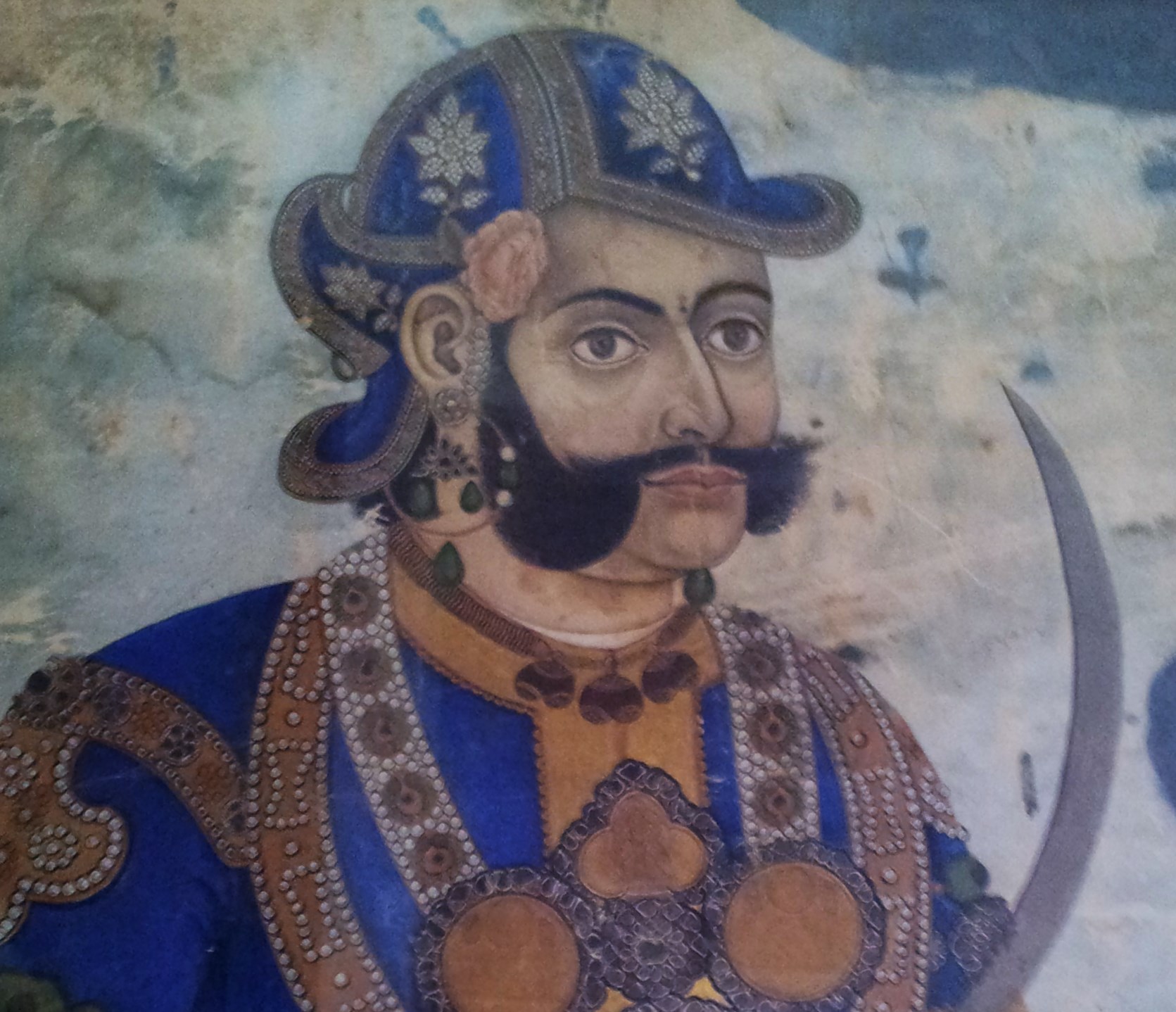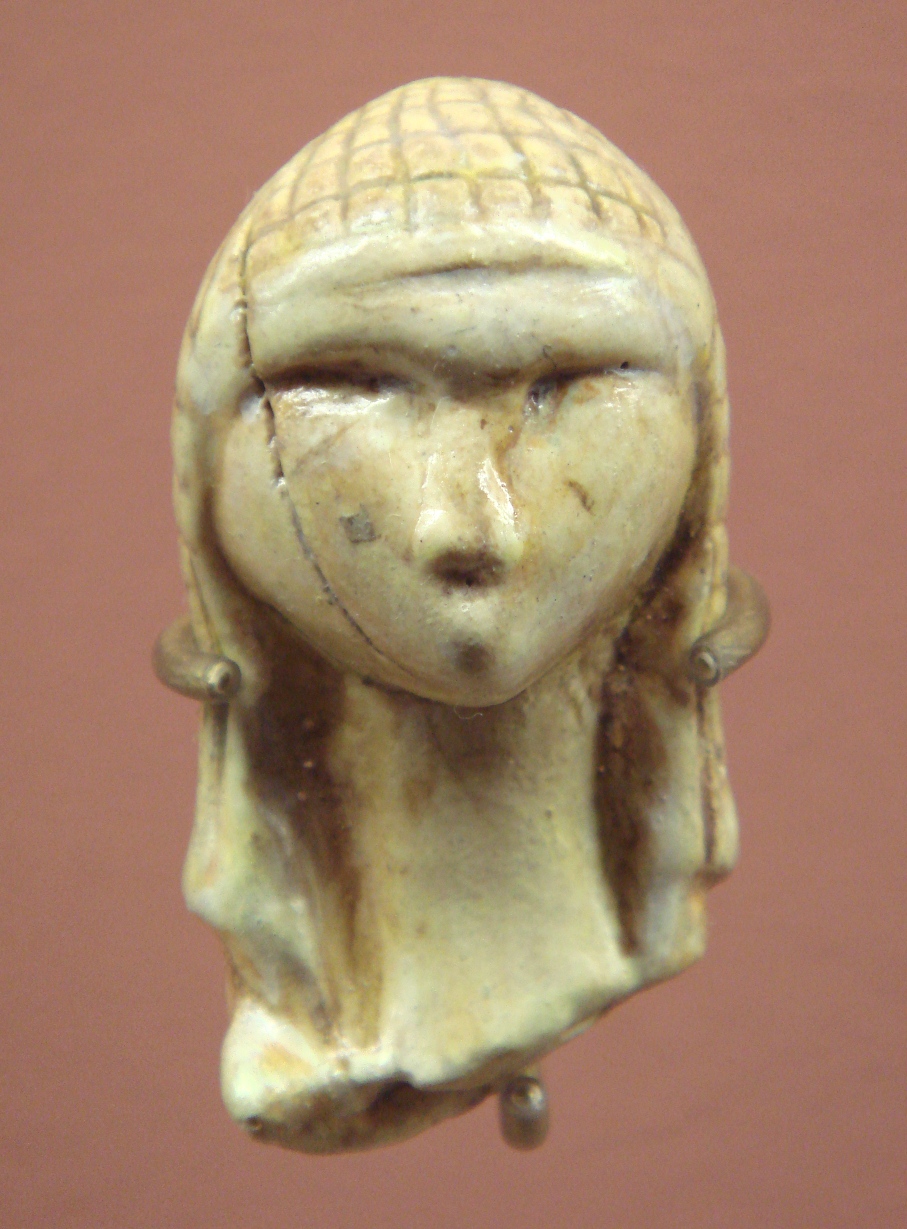|
Hairstyles
A hairstyle, hairdo, haircut or coiffure refers to the styling of hair, usually on the human scalp. Sometimes, this could also mean an editing of facial or body hair. The fashioning of hair can be considered an aspect of personal grooming, fashion, and cosmetics, although practical, cultural, and popular considerations also influence some hairstyles. The oldest known depiction of hair styling is hair braiding which dates back about 30,000 years. In history, women's hair was often elaborately and carefully dressed in special ways, though it was also often kept covered outside the home, especially for married women. From the time of the Roman Empire until the Middle Ages, most women grew their hair as long as it would naturally grow. Between the late 15th century and the 16th century, a very high hairline on the forehead was considered attractive. Around the same period, European men often wore their hair cropped no longer than shoulder-length. In the early 17th century, mal ... [...More Info...] [...Related Items...] OR: [Wikipedia] [Google] [Baidu] |
Pixie Cut
A pixie cut is a short hairstyle, generally short on the back and sides of the head and slightly longer on the top, with very short bangs. It is a variant of a crop. The name is derived from the mythological pixie. History Pixie cuts were popularized first in the 1950s when Audrey Hepburn wore the style in her debut film ''Roman Holiday'', and later in the 1960s by actress Mia Farrow (notably in Roman Polanski’s ''Rosemary's Baby''), British supermodel Twiggy, and then even later by ''Laugh-In'' star Goldie Hawn. Jean Seberg also sported a pixie cut for Otto Preminger's '' Bonjour Tristesse'' and Jean-Luc Godard’s ''Breathless''. The crop became fashionable again in the late 1970s and 1980s, with one of its most notable wearers being the actress Jacqueline Pearce in the British TV series ''Blake's 7''. The crop also was big in the mid 1990s, and Halle Berry appeared in the 2002 James Bond film ''Die Another Day'' wearing a crop. Pixies are very easy to maintain and can be ... [...More Info...] [...Related Items...] OR: [Wikipedia] [Google] [Baidu] |
Pouf
The pouf or pouffe also "toque" (literally a thick cushion) is a hairstyle and a hairstyling support deriving from 18th-century France. It was made popular by the Queen of France, Marie Antoinette (1755–1793), when she wore it in June 1775 at the coronation of her husband Louis XVI, triggering a wave of French noblewomen to wear their hair in the same manner. The hairstyle would become popular across Europe in the 1780s. Beginning and evolution Marie Antoinette acquired the hairstyle, which was a creation from the famed hairdresser of the day, Léonard Autié. In April 1774, it was first sported as ''Le Pouf Sentimental'' by Duchess de Chartres at the Opera. The Duchesse's hairstyle was immense. 14 yards of gauze were wrapped around a tower as well as two figures representing the baby Duc de Beaujolais in his nurse's arms with an African boy (a particular favorite of the Duchess) at her feet. A parrot and a plate of cherries were also added. From then on it quickly became ... [...More Info...] [...Related Items...] OR: [Wikipedia] [Google] [Baidu] |
Long Hair
Long hair is a hairstyle where the head hair is allowed to grow to a considerable length. Exactly what constitutes long hair can change from culture to culture, or even within cultures. For example, a woman with chin-length hair in some cultures may be said to have short hair, while a man with the same length of hair in some of the same cultures would be said to have long hair. Males having short, cut hair are in many cultures viewed as being under society's control, such as while in the military or prison or as punishment for a crime. Long lustrous female hair is generally rated attractive by both men and women across cultures. The prevalence of trichophilia (hair partialism or fetishism) is 7% in the population, and very long hair is a common subject of devotion in this group. Biological significance Humans, horses, orangutans and lions are among the few species that may grow their head hair or manes very long. Humans are believed to have lost their fur 2.5–3 million years ... [...More Info...] [...Related Items...] OR: [Wikipedia] [Google] [Baidu] |
Sideburns
Sideburns, sideboards, or side whiskers are facial hair grown on the sides of the face, extending from the hairline to run parallel to or beyond the ears. The term ''sideburns'' is a 19th-century corruption of the original ''burnsides'', named after American Civil War general Ambrose Burnside, a man known for his unusual facial hairstyle that connected thick sideburns by way of a moustache, but left the chin clean-shaven. Variations Sideburns can be worn and grown in combination with other styles of facial hair, such as the moustache or goatee, but once they extend from ear to ear via the chin they cease to be sideburns and become a beard, chinstrap beard, or chin curtain. Indigenous men of Colombia and Mexico, including Aztecs, shaved their heads and wore their braided sideburns long, said to be wearing "balcarrotas", rarely seen in modern times, but prized in the 16th century as a mark of virile vanity and banned by the colonial authorities in New Spain, resulting in ... [...More Info...] [...Related Items...] OR: [Wikipedia] [Google] [Baidu] |
Braid
A braid (also referred to as a plait) is a complex structure or pattern formed by interlacing two or more strands of flexible material such as textile yarns, wire, or hair. The simplest and most common version is a flat, solid, three-stranded structure. More complex patterns can be constructed from an arbitrary number of strands to create a wider range of structures (such as a fishtail braid, a five-stranded braid, rope braid, a French braid and a waterfall braid). The structure is usually long and narrow with each component strand functionally equivalent in zigzagging forward through the overlapping mass of the others. It can be compared with the process of weaving, which usually involves two separate perpendicular groups of strands (warp and weft). Historically, the materials used have depended on the indigenous plants and animals available in the local area. During the Industrial Revolution, mechanized braiding equipment was invented to increase production. The braiding ... [...More Info...] [...Related Items...] OR: [Wikipedia] [Google] [Baidu] |
Dastar
A dastār ( pa, ਦਸਤਾਰ/دستار, from fa, دستار; ''dast'' or "hand" with the agentive suffix -ār; also known as a ਪੱਗ ''paga'' or ਪੱਗੜੀ ''pagaṛī'' in Punjabi) is an item of headwear associated with Sikhism, and is an important part of Sikh culture. The word is loaned from Persian through Punjabi. In Persian, the word ''dastār'' can refer to any kind of turban and replaced the original word for turban, ''dolband'' (دلبند), from which the English word is derived. Among the Sikhs, the ''dastār'' is an article of faith that represents equality, honour, self-respect, courage, spirituality, and piety. The Khalsa Sikh men and women, who keep the Five Ks, wear the turban to cover their long, uncut hair ('' kesh''). The Sikhs regard the ''dastār'' as an important part of the unique Sikh identity. After the ninth Sikh Guru, Tegh Bahadur, was sentenced to death by the Mughal emperor Aurangzeb, Guru Gobind Singh, the tenth Sikh Guru created the ... [...More Info...] [...Related Items...] OR: [Wikipedia] [Google] [Baidu] |
Himba People
The Himba (singular: OmuHimba, plural: OvaHimba) are an indigenous people with an estimated population of about 50,000 people living in northern Namibia, in the Kunene Region (formerly Kaokoland) and on the other side of the Kunene River in southern Angola. There are also a few groups left of the OvaTwa, who are also OvaHimba, but are hunter-gatherers. Culturally distinguishable from the Herero people, the OvaHimba are a semi-nomadic, pastoralist people and speak OtjiHimba, a variety of Herero, which belongs to the Bantu family within Niger–Congo. The OvaHimba are semi-nomadic as they have base homesteads where crops are cultivated, but may have to move within the year depending on rainfall and where there is access to water. The OvaHimba are considered the last (semi-) nomadic people of Namibia. Culture Subsistence economy The OvaHimba are predominantly livestock farmers who breed fat-tailed sheep and goats, but count their wealth in the number of their cattle. They ... [...More Info...] [...Related Items...] OR: [Wikipedia] [Google] [Baidu] |
Tuareg People
The Tuareg people (; also spelled Twareg or Touareg; endonym: ''Imuhaɣ/Imušaɣ/Imašeɣăn/Imajeɣăn'') are a large Berber ethnic group that principally inhabit the Sahara in a vast area stretching from far southwestern Libya to southern Algeria, Niger, Mali, and Burkina Faso. Traditionally nomadic pastoralists, small groups of Tuareg are also found in northern Nigeria. The Tuareg speak languages of the same name (also known as ''Tamasheq''), which belong to the Berber branch of the Afroasiatic family. The Tuaregs have been called the "blue people" for the indigo dye coloured clothes they traditionally wear and which stains their skin. They are a semi-nomadic people who practice Islam, and are descended from the indigenous Berber communities of Northern Africa, which have been described as a mosaic of local Northern African ( Taforalt), Middle Eastern, European (Early European Farmers), and Sub-Saharan African-related ancestries, prior to the Arab expansion. Tuareg people ... [...More Info...] [...Related Items...] OR: [Wikipedia] [Google] [Baidu] |
Sikhism
Sikhism (), also known as Sikhi ( pa, ਸਿੱਖੀ ', , from pa, ਸਿੱਖ, lit=disciple', 'seeker', or 'learner, translit=Sikh, label=none),''Sikhism'' (commonly known as ''Sikhī'') originated from the word ''Sikh'', which comes from the Sanskrit root ' meaning "disciple", or ' meaning "instruction". Singh, Khushwant. 2006. ''The Illustrated History of the Sikhs''. Oxford University Press. . p. 15.Kosh, Gur Shabad Ratnakar Mahan. https://web.archive.org/web/20050318143533/http://www.ik13.com/online_library.htm is an Indian religion that originated in the Punjab region of the Indian subcontinent,"Hinduism, Buddhism, Jainism and Sikh originated in India." around the end of the 15th century CE. It is the most recently founded major organized faith and stands at fifth-largest worldwide, with about 25–30 million adherents (known as Sikhs) .McLeod, William Hewat. 2019 998 Sikhism developed from the spiritual teachings of Guru Nanak (1469–1539), the faith's first g ... [...More Info...] [...Related Items...] OR: [Wikipedia] [Google] [Baidu] |
Old Chinese Woman With Elaborate Hair Style
Old or OLD may refer to: Places *Old, Baranya, Hungary *Old, Northamptonshire, England * Old Street station, a railway and tube station in London (station code OLD) *OLD, IATA code for Old Town Municipal Airport and Seaplane Base, Old Town, Maine, United States People *Old (surname) Music * OLD (band), a grindcore/industrial metal group * ''Old'' (Danny Brown album), a 2013 album by Danny Brown * ''Old'' (Starflyer 59 album), a 2003 album by Starflyer 59 * "Old" (song), a 1995 song by Machine Head *''Old LP'', a 2019 album by That Dog Other uses * ''Old'' (film), a 2021 American thriller film *''Oxford Latin Dictionary'' *Online dating *Over-Locknut Distance (or Dimension), a measurement of a bicycle wheel and frame *Old age See also *List of people known as the Old * * *Olde Olde is the surname of: * Barney Olde (1882–1932), Australian politician * Erika Olde, Canadian film producer, financier and billionaire heiress * Hans Olde (1855–1917), German painter and ar ... [...More Info...] [...Related Items...] OR: [Wikipedia] [Google] [Baidu] |
Sheitel
According to halacha (Jewish law), married Jewish women are expected to cover their hair when in the presence of men other than their husband or close family members. Such covering is common practice nowadays among Orthodox Jewish women. Different kinds of head coverings are used, among them the mitpaḥat or tichel (headscarf), shpitzel, snood, hat, beret, and sheitel (wig). The most common head coverings in the Haredi community are headscarves in the form of the tichel and snood, though some wear hats, berets or sheitels; the tichel and snood remain the historic and universally accepted rabbinical standard for observant Jewish women. The headscarves can be tied in a number of ways, depending on how casually the wearer is dressed. Covering the hair is part of the modesty-related dress standard called . Laws According to Jewish law (''halacha''), a woman must cover her hair after marriage. The requirement applies in the presence of any men other than her husband, son, grand-s ... [...More Info...] [...Related Items...] OR: [Wikipedia] [Google] [Baidu] |
Venus Of Brassempouy
The Venus of Brassempouy (French: ''la Dame de Brassempouy'', , meaning "Lady of Brassempouy", or ''Dame à la Capuche'', "Lady with the Hood") is a fragmentary ivory figurine from the Upper Palaeolithic, apparently broken from a larger figure at some time unknown. It was discovered in a cave at Brassempouy, France in 1892. About 25,000 years old, it is one of the earliest known realistic representations of a human face. Discovery Brassempouy is a small village in the ''département'' of Landes in southwest France. Two caves near the village, 100 metres from each other, were among the first Paleolithic sites to be explored in France. They are known as the ''Galerie des Hyènes'' (Gallery of the Hyenas) and the ''Grotte du Pape'' (the "Grotto of the Pope"). The Venus of Brassempouy was discovered in the Grotto of the Pope in 1894, accompanied by at least eight other human figures. These may be an example of unfinished work, as if the artist or artists carved several figurines at th ... [...More Info...] [...Related Items...] OR: [Wikipedia] [Google] [Baidu] |











